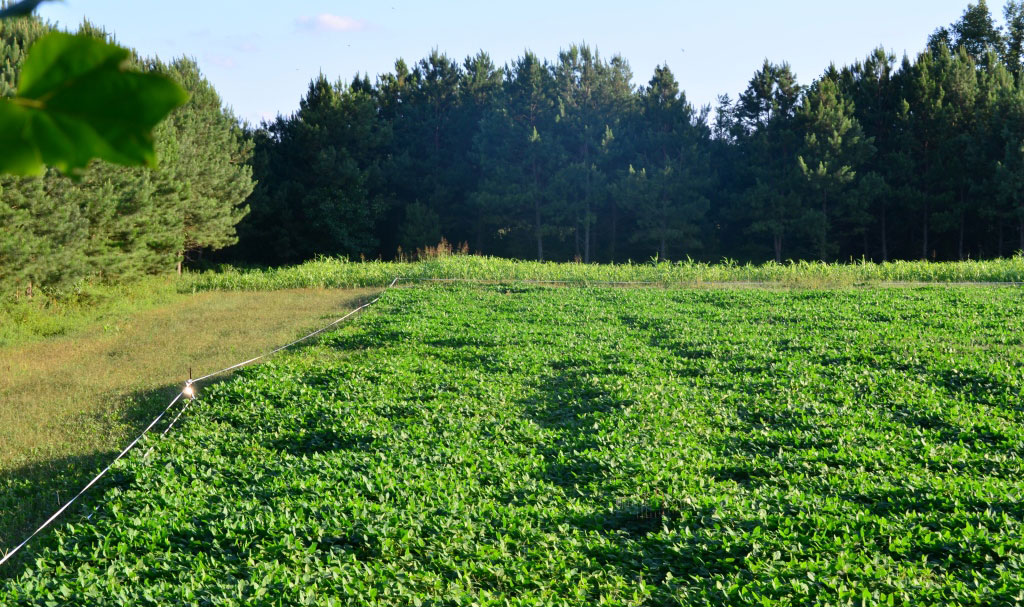A Food Plot is a planted area set aside to act as a supplement food source for wildlife. These food plots generally consist of but not limited to grains, legumes, or certain wildflowers. These plants can be annual or perennial. The main reason for growing food plots are to provide wildlife with easy to find food source than what is available in the dead of winter.
There are some plots, especially ones that are in middle of the property, that are left untouched to offer food that is safe and under no pressure whatsoever. These plots then can provide excellent results. It can help improve the herd structure of deer and increase the odds of your success.
Does are about to drop fawns, so this is one the critical times of the year with the spring greens up. So, if you are planning to grow a food plot this spring, this article can help you choose the best plants for your plot.
1. Soybeans and Peas
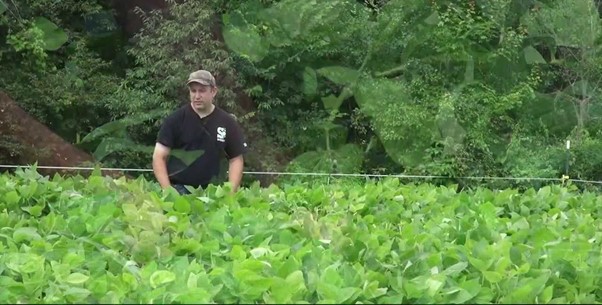
Planting combination of plants is the solution to the noticeable gaps that are left when the food sources are not available or viable on your food plots. You can plant the available areas in things that offer more diverse seasonal attraction. For example, planting cereal grains on half of the plot and broad, green leafy vegetables on the other half side.
This helps prevent forage gaps and limits inter-competition between plant species. It also keeps the forage area larger, which helps keep deer coming in all season long. Let us learn how to blend Soybean and Peas to make an active food plot.
This blend of Soybean and Peas is among the favorite combos. Soybeans are absolute favorite and are late season food. However, peas are all season variety meaning they remain good for most of the seasons. Especially in months of October and November, when the beans look less attractive.
Nutritional content of Soybean and Peas blend;
| Soybeans | Peas | |
| Carbohydrate Level | Medium | High |
| Protein Level | 25-30 % | 25-30 % |
| Preferred pH | 6.0 and up | 6.0-7.2 |
Soybean provides proteins all summer long and becomes an excellent source of grains in the winter. The best part is that you can grow and maintain them with basic equipment. Soybean is the king of deer feed. It is not only rich in proteins but also offers good number of carbohydrates and is highly palatable.
Deer targets the leafy plants earlier and feeds on actual harder beans in the late season. They also don’t work hard to feed instead sits at an easy to reach height.
Optimum pH for the growth of soybeans is 6.0 and up. Now, if you want to drill the seeds, 40 to 60 pounds per acre will be sufficient. While for broadcasting, 60-80 pounds per acre will be the requirement.
Peas can grow throughout the year and are nutritious for the deer. They are good source of nutrition when the food sources are limited the most. They are winter variety annual legumes, rich in proteins (up to 30%) and growing up to 4 to 5 feet tall. They provide lots of forage.
Peas grow best in the pH range of 6.2 to 7.0. Now, if you are drilling seeds, plant at a rate of 30 to 40 pounds per acre. If broadcasting, 50 to 60 pounds per acre will do.
2. Wheat and Beet
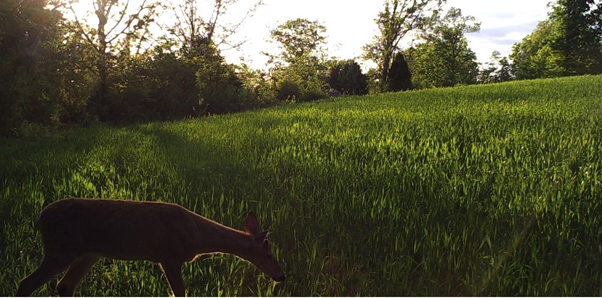
Wheat is among the most widely cultivated grain across the globe and so are the beets. This nutritious combination is perfect to keep the deer retained on the plot throughout the season.
Speaking of nutrition, let us see the nutrition value this combo must provide.
|
|
Wheat | Beet |
| Carbohydrate Level | High | Medium |
| Protein Level | 18-20 % | 18-25 % |
| Preferred pH | 6.0-6.8 | 6.0-7.2 |
Because this combination of wheat and Beet provides high protein content, are easy to grow and relatively strong in carbohydrates, they are an excellent pair choice for food plots.
Wheat is a cool-season cereal which is not only highly digestible but also rich in protein content (18 to 20%) and provides lot of nutritional value. However, unlike other plants, wheat has a disadvantage of providing less forage. Because of this reason many land managers and hunters prefer to plant something else like beet, alongside wheat.
For best results look for a pH 6.0- 6.8 and higher. Adjust the pH as per the requirement. Wheat demands nitrogen-rich soil, so after planting, apply nitrogen a few weeks after germination to increase the overall production of the plant.
If you are planning to plant the seeds by drilling, 75 pounds per acre should be enough. If broadcasting, do so at a rate 100 pounds per acre.
Beets have a sugary flavor due to their upward content of 20% sucrose. The deer uses these sugar sources to build up their fat stores in the fall and winter months.
Beets are good choice for food plot considering its large forage. Individual beets can weigh 2.5 to 3 pounds, with the common being 1.5 to 2 pounds.
Beets also can be grown on soils of variable ph. But they grow best in well drained, loamy soil. For their best growth provide them with a soil pH range of 6.0 to 6.7.
If you are planting the seeds by drilling 7-8 pounds per acre should do while if you are broadcasting, do so at the rate of approximately 9-0 pounds per acre.
3. Cereal rye and Radishes
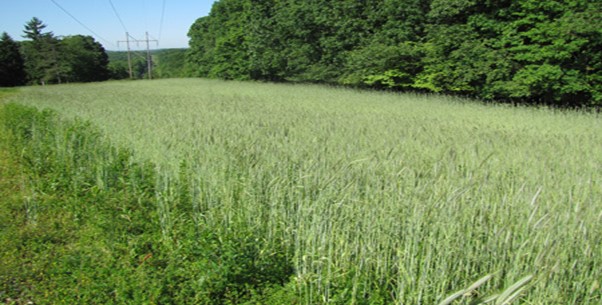
This combination survives the best in the northern half of the countries and becomes hard to beat by any other combination. They have kind of similar pH requirements which makes the fertilizing and liming process much simpler.
Let us see how nutritional this combo is.
| Radish | Rye | |
| Carbohydrate Level | Low | High |
| Protein Level | 15 % | 25 to 32 % |
| Preferred pH | 6.5 and up | 6.3-6.8 |
Radishes belong to the brassica family. As deer season progresses and the cold returns, brassica food plots become a hotspot. The term also applies to turnips, canola and rapeseeds among the common which are sweetened once they are hit by frost.
This makes rye one of the best food options throughout most of the countries. As they are hit by the frost, the cold sends the sugar concentration on to the leaves. Some even go beyond the greenery to produce late season bulbs, like radish and turnips.
They are consumed in two stages; first the leaves and then the roots. Once the deer gets hooked on these brassicas, planting any other food plot in August becomes hard to imagine.
Cereal rye is a perfect late season food-plot option for wildlife. They aren’t great sources of protein (15% crude protein on an average), but it is high in carbohydrates, and is craved by the deer in cold months.
Rye grain germinates quickly and is highly preferred by the deer. If soil pH and fertility is managed properly, rye grains can provide high-quality forage with high protein levels and digestibility. Rye is known to tolerate soil acidity and low fertility better than any other cereal. pH range of 6.3 to 6.8 suits the best for cereal rye.
Cereal rye grows anywhere between 3 to 5 feet, and since it is an annual grass species it is pretty easy to establish it. Fertilize and lime the soil as needed. Seeding rates range between 55 to 75 pounds per acre.
As long as rye is not is not planted too dense, it does well in mixtures with other forages like brassica. However, it is not recommended to include it in perennial clover/chicory plots as a nurse crop because lower perennial require adequate space and sunlight for strong production in summer.
If broadcasting, plants the seeds at higher rates- as much as 100 to 150 pounds per acre. Be sure to create a smooth, firm seedbed to ensure optimum germination. Lightly disk the seeds into the soil 1 to 2 inches deep or drill about an inch.
4. Clover
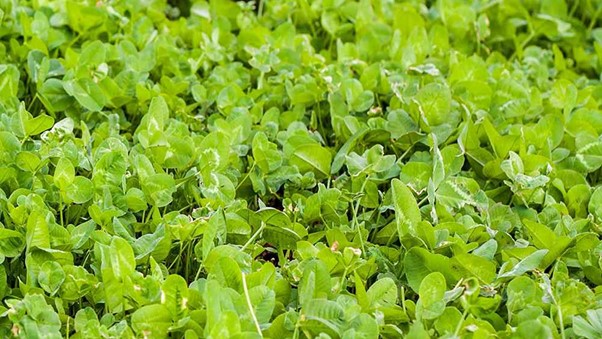
Clover is among the easiest food plot species to establish and maintain. Clover fixes nitrogen and provides lush green carpet of nearly indestructible forage. It is also one of the most popular species to throw into mixes, in standalone plots or to be thrown in around other larger food plots.
Clover is a huge category of many different species. White clovers, especially in particular are the king of the majority of food plots. The reason being the large forage of this species.
Majority of food plots are small hidey – hole food plots being less than an acre in size. White clover (Ladino or Durana) alone planted in these small plots can make perfect kill plots in the early season. It is browse tolerant, shade tolerant, and attractive to whitetails.
Clover put in by either frost seeding or during the early spring rains make for perfect turkey hunting food plots. The best part is that clover plots are easy to establish and maintain, thus being the simplest plot that you can create.
5. Turnips
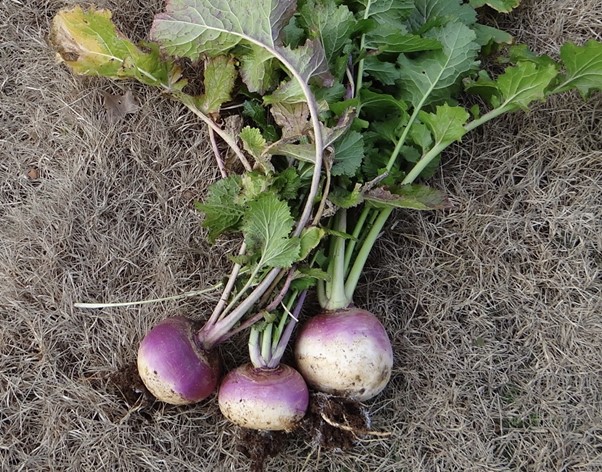
Turnips again belong to brassica family and offer food sources in two stages: first the leafy part and later the root (turnip) itself. Turnips grows fairly quickly and reach maturity in 75 to 90 days. There are many nutritional advantages of growing turnips. They provide 15 – 22% protein, they are highly digestible, and their yields are generally high.
Deer begin eating turnips as early as at the time of germination. However, this does not mean that you can expect peak consumption during the early season. In regions with other quality food sources, deer don’t hit hard on them until mid-October to early November.
Brassica’s are attractive due to one common thing- sugar. The hard frost causes a chemical reaction in the plant which eventually increases glucose in significant amount. This once – bitter plant suddenly becomes sweeter. Once this happens the deer hits hard on them.
Soils play a key role in growth of plants. Turnips can grow on a wide range of soils but grows best on well-drained soil. Turnips grow best when the soil pH of above 6.0. Apply lime and fertilizer as needed. Spray and wait for some time. Then work the soil with disk.
If drilling, plant approximately 7 to 9 pounds per acre instead. When broadcasting, plant at 10 – 12 pound per acre seeding rate.
Conclusion
Food plots are essential and can benefit many types of wildlife. They can serve as supplemental or emergency food supplies during extreme cold or snow in winter months, and help wild life get ready for winter. Also, it assures adequate food supplies for the wildlife for spring and summer months for reproduction and raising their young of the year.
Food plots work well in or near protected grassland or woodland areas that offer good shelter and water but are lacking food supply.
They play an essential role for anyone serious about deer hunting. They help attract deer to a specific location, and help keep them on acreage. They can tip your odds in your favor, especially when you are working on a small piece of area.
Speaking of hunting, even the smartest and most mature bucks reveal a weak spot in their armor…their stomach. So, if you provide enough food and right type of food, you can pull through most stubborn buck from the bedding areas during daylight. So, all you gotta do is to maximize the production, starting off with the soil!!

